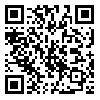Sat, Jul 19, 2025
[Archive]
Volume 19, Issue 2 (June-Biomaterials Special Issue- 2022)
IJMSE 2022, 19(2): 1-10 |
Back to browse issues page
Download citation:
BibTeX | RIS | EndNote | Medlars | ProCite | Reference Manager | RefWorks
Send citation to:



BibTeX | RIS | EndNote | Medlars | ProCite | Reference Manager | RefWorks
Send citation to:
Moshayedi S, Sarpoolaky H, Khavandi A. In Vitro Release Kinetics of Curcumin From Thermosensitive Gelatin-Chitosan Hydrogels Containing Zinc Oxide Nanoparticles. IJMSE 2022; 19 (2) :1-10
URL: http://ijmse.iust.ac.ir/article-1-2633-en.html
URL: http://ijmse.iust.ac.ir/article-1-2633-en.html
Abstract: (15494 Views)
In this paper, chemically-crosslinked gelatin/chitosan hydrogels containg zinc oxide nanoparticles (ZNPs), were loaded with curcumin (CUR), and their microstructural features, physical properties, curcumin entrapment efficiency, and drug release kinetics were evaluated using scanning electron microscopy (SEM), the liquid displacement method, and UV–Vis spectroscopy. The in vitro kinetics of drug release was also studied using First-order, Korsmeyer-Peppas, Hixon-Crowell, and Higuchi kinetic models. The SEM micrographs confirmed the formation of highly porous structures possessing well-defined, interconnected pore geometries. A significant reduction in the average pore sizes of the drug-loaded hydrogels was observed with the addition of ZNPs and CUR to the bare hydrogels. High value of drug loading efficiency (~ 72 %) and maximum drug release of about 50 % were obtained for the drug-loaded scaffolds. It was found that curcumin was transported via the non-Fickian diffusion mechanism. It was also shown that the kinetics of curcumin release was best described in order by Hixon-Crowell, Higuchi, and Korsmeyer-Peppas models, demonstrating that drug release was controlled by diffusion, degradation, and swelling of the drug carrier. However, lower degree of fitting was observed with First-order kinetic model.
Type of Study: Research Paper |
Send email to the article author
| Rights and permissions | |
 |
This work is licensed under a Creative Commons Attribution-NonCommercial 4.0 International License. |







